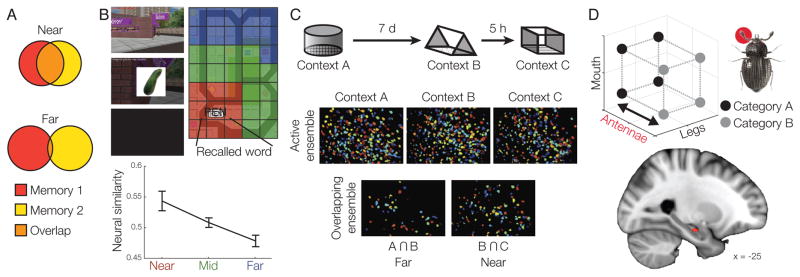Figure 1.
(A) The overlap in representations of different memories reflects the distance between their spatial, temporal, and conceptual attributes, with memories nearer to one another resulting in more overlapping representations. (B) Ensemble place-cell activity in human hippocampus reflects the spatial distance between memories. Participants learned the locations of objects in a virtual environment, then verbally recalled the objects. Ensemble activity during object recall was most similar to place-cell activity for locations near to where the object was learned. Adapted from Ref. [31]. (C) In mice, memories of different cage contexts are represented by overlapping neural ensembles in hippocampal subfield CA1 when exposure to the cages is separated by a shorter delay of 5 h, but do not show significant overlap when separated by a longer interval of 7 d. Adapted from Ref. [32]. (D) Model-based fMRI data in humans demonstrates that item representations within hippocampus reflect conceptual similarity. The representation of three distinct features of categorized items was estimated based on patterns of activity. After learning, hippocampal representations emphasize features that are diagnostic for the category, causing items from the same conceptual category (e.g., the beetles with thin antennae represented by black dots) to become representationally more similar, and dissimilar to items from a different category (the beetles with thick antennae represented by the gray dots). Adapted from Ref. [20].

